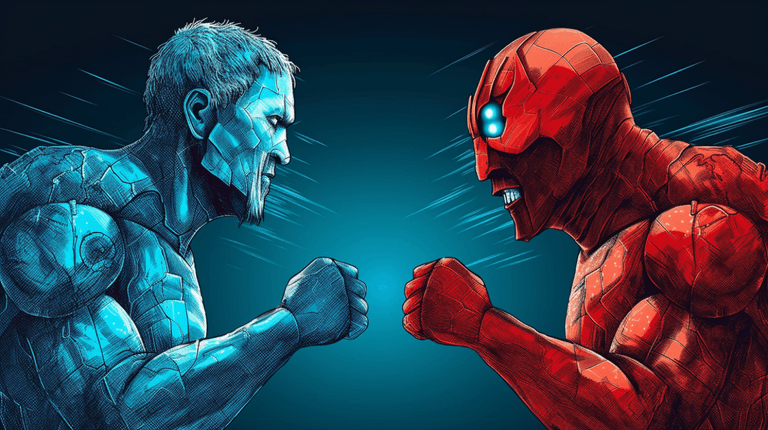Arbitrum
Uncover the newest tokens of Arbitrum – a layer 2 scaling solution with fast, low-cost transactions, EVM compatibility, and a trustless bridge to Ethereum.
All You Need to Know About Arbitrum
Arbitrum is a Layer 2 scaling solution for Ethereum, designed to increase the speed and reduce the cost of transactions on the Ethereum blockchain. Built by Offchain Labs, Arbitrum is a decentralized system that operates on top of Ethereum, using a unique technology called Optimistic Rollups to process transactions off-chain, before validating them on the Ethereum mainnet. This allows for faster and more affordable transactions, while still maintaining the security and decentralization of the Ethereum network.
A Brief History of Arbitrum
Arbitrum was developed by Offchain Labs, a New York-based blockchain development company, co-founded by Ed Felten, a computer science professor at Princeton University, and several of his students. The project was launched in 2019, with the aim of creating a faster, more scalable, and more secure alternative to Ethereum's existing smart contract platform.
The team behind Arbitrum believed that Ethereum's limitations were hindering the growth of decentralized applications (dApps) and smart contract-based systems and set out to create a solution that would allow developers to create complex, high-performance dApps that could compete with centralized services.
Why do we need scaling solutions?
As Ethereum's popularity has grown, so has its network usage. With the increasing number of users and transactions, the network has become congested, leading to slower transaction speeds and higher fees.
To address these issues, Ethereum needs a scaling solution that can increase its transaction throughput and lower fees. The need for scaling is driven by the following factors:
- Increased adoption: As more applications and users come onto the Ethereum network, the demand for faster and cheaper transactions increases.
- Decentralization: Ethereum's vision of a decentralized world computer requires a network that can support many nodes and users without compromising security or performance.
- Competition: With other blockchains offering faster and cheaper transactions, Ethereum risks losing users and developers to these alternatives if it cannot improve its scaling.
How Arbitrum Works?
To interact with the Arbitrum network, it is essential to transfer some funds there. For that, the Arbitrum official bridge can be used - the bridge works by locking funds on one side and minting on the other. Once funds are deposited on the network, users can transact normally.
Transactions are forwarded to the Arbitrum sequencers, who create blocks and bundle transactions to be sent on the Ethereum mainnet. To ensure that every transaction is genuine and doesn't break any rules, the Fraud Proof system was implemented. In no malicious transactions are detected, the changes are transferred to the Ethereum mainnet. By uploading transactions in batches, using Arbitrum prevents mainnet congestion and offers lower fees, as well as increased speed.
Fraud-Proof
Fraud Proof is a security system used by optimistic rollups, such as Arbitrum, to validate all transactions in a single batch before posting them on the Ethereum mainnet. The system works on the premise of being innocent until proven guilty. If a user notices an invalid transaction or block, they can submit a fraud proof to the network.
The fraud proof contains succinct proof that the transaction or block is invalid and provides evidence of invalidity. The network then uses this proof to verify the invalidity and challenge the malicious actor to respond. If the malicious actor cannot provide a valid response within a given time frame, their transaction or block is considered invalid and they lose their staked funds. This creates a strong disincentive for malicious behavior, as it is financially costly for the attacker.
Key Concepts of Arbitrum
Scaling Solution
Arbitrum was invented to expand the capabilities of Ethereum and to make it more accessible for common users. Ethereum focuses mainly on security and decentralization, however, speed and affordability are not its particularly strong sides. The concept of scaling solutions refers to third-party products that solve these problems of Ethereum.
Rollups, or Layer 2s, such as Arbitrum, are one of the most popular ways to decrease gas fees for transactions and make them faster. However, to gain speed and affordability, optimistic rollups often sacrifice security and decentralization to some extent. The so-called Zero-knowledge Rollups can be the next step of this evolution. Find out more about Zk-rollups.
EVM-compatibility
EVM compatibility allows blockchains to execute smart contracts written in Solidity, the language used for Ethereum smart contracts. Arbitrum is EVM-compatible, meaning that developers can easily port their Ethereum-based dApps to Arbitrum. This provides a seamless transition for developers and users to migrate to Arbitrum from Ethereum and expands the potential use cases of both.
In addition to making it easier to migrate dApps from Ethereum, EVM compatibility enhances interoperability between different blockchain networks. This enables cross-chain compatibility and facilitates the creation of new decentralized applications that can work across multiple blockchains.
Smart Contracts
Being an Ethereum-derived chain, Arbitrum allow for the use of the same Smart contracts written in Solidity. Smart contracts are contracts whose terms are coded directly into their self-executing code, operating on a decentralized blockchain network. They eliminate the need for intermediaries, making transactions trustless. Ethereum pioneered smart contract technology with the creation of Solidity, its native programming language.
FAQs
How to add Arbitrum to Metamask?
To add Arbitrum manually, open your Metamask wallet and expand the network button in the top right corner. From there, you should see a button saying "Add Network". When you click on that button, Metamask will show you some popular networks to add, including the BNB chain.
How to use Arbitrum?
Arbitrum has a whole ecosystem of applications. You can find here many projects already operating on Ethereum. Using the same dApps on Arbitrum can provide you with lower fees and faster transaction finality. There are also many original projects on the Arbitrum network that are worth mentioning, such as the Radiant lending platform, or ZyberSwap DEX.
What is Arbitrum used for?
Arbitrum is used mainly as a substitute for the Ethereum mainnet, but with cheaper fees and faster transactions. A lot of the major Ethereum dApps, like Uniswap, Curve, or GMX, are also available on Arbitrum. However, you can also find original Arbitrum applications, such as the Radiant lending platform, or ZyberSwap DEX.
How to invest in Arbitrum?
Arbitrum does not have its own token at the moment. There are speculations of such token being released in the near future and many users have prepared to be eligible for a potential airdrop. You can invest in Arbitrum indirectly by supporting the local dApp infrastructure and owning some of its native tokens.
How to bridge to Arbitrum?
The most secure way is to use the official Arbitrum bridge. A bridge is a decentralized application allowing the transfer of funds from one chain to another. The bridging transaction involves locking assets on one side of the bridge and minting the same amount on the other.



